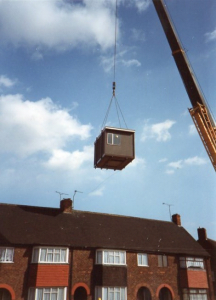My journey with kidney failure began quite some time ago, when I was 19. I had been interviewed for a job at BP and was through to the medical for the position when I got the shock of my life, I was told I had to see my GP as a matter of urgency. So a few days later the appointment with the GP came around and he confirmed what the medical had discovered, I had very high blood pressure and my kidneys were leaking protein. I was immediately referred to a consultant kidney specialist (Nephrologist to be exact) at the local hospital in Hull.
A month later I was at hospital.
At the hospital I was given blood tests and other examinations, which included being inject with a dye which could be x-rayed and show any damage to my kidneys. After all this was done, I was given the news that my kidneys were failing and I would need dialysis in the not too distant future.
It’s certainly not the sort of thing you expect to hear when you are 19 years old and to some extent I was in shock. Over the next few months I would keep having blood tests and hospital appointments as my kidney function continued to deteriorate.
A year later, the time came for my haemodialysis access to be created, this would involve and operation in which a vein and artery would be joined together under a local anaesthetic. Near the end of the operation the anaesthetic had begun to wear off and I could feel each of the stitches being put into my arm. Within hours I could feel the buzzing of the functional fistula. It would be another 4 months before it would be put to any use.
In October 1992, I got a call to say that I needed to start dialysis and to come in to hospital on the Wednesday. The Wednesday came around and I set off for my first dialysis session. It was strange seeing my blood going round the machine, and after 3 hours I was finished. I got up of the chair I had been in, thinking everything was fine, within seconds the room began to spin and I had to quickly sit down again! However, I had survived my first dialysis session.
Within a few weeks I would begin training for home haemodialysis.
The training began, and in the first training session I needled myself – which was something I had not expected to do so soon! However, despite the surprise I did manage to do it. Over the coming month I was trained in how to set up and operate the dialysis machine, take my own observations (blood pressure, weight and temperature).
While all this was happening I was also required to stick a restrictive renal diet (low potassium and low phosphate) and also had a fluid restriction of 500ml per day (which is less than a pint!). As a result I had a very boring and bland diet, no chocolate, very little cheese, no tomatoes and all potato products needed to be boiled before I could eat them. In fact about the only thing I could eat was pasta (without any nice sauces though). This was probably one of the hardest aspects to deal with at the time.
Back to the training.
Within a few weeks I became quite proficient at the whole process and was almost ready to dialyse at home. All that remained was to have the porta cabin put into the back garden – which would be quite a feat since I lived in a mid-terrace house at the time. It would require the cabin being lifted over the house and carefully placed into the back garden, before being plumbed and wired in. That wouldn’t happen until after Christmas, in January 1993.

In early January the small porta cabin was lifted over the roof over the house, and placed in the back garden. A few days later the dialysis machine arrived and everything was plumbed in and ready to go – my home haemodialysis was about to begin.
The first time dialysing at home was quite scary, there wouldn’t be the instant support that was present at hospital, and for all intents and purposes I, with my mum’s help, would be alone to dialyse. The first session went well and smoothly. Luckily this is how things would be, although the routine would still remain stressful. For the next 18 months things would carry on much in the same vein, every Monday, Wednesday and Friday I would set up the machine and dialyse for 3 hours. Every Friday I would have to inject myself with a hormone called EPO which would stimulate my bone marrow to create red blood cells, this was something a normal healthy kidney would do.
Things were about to change, as on 13th September 1994 I would get the call that all dialysis patients are eager to receive – there is a kidney for you. In the next hour I got my things together, and was then picked up and taken to St. James Hospital in Leeds.
Written By Jason Radley
Read Part 2 – My life with kidney failure part 2